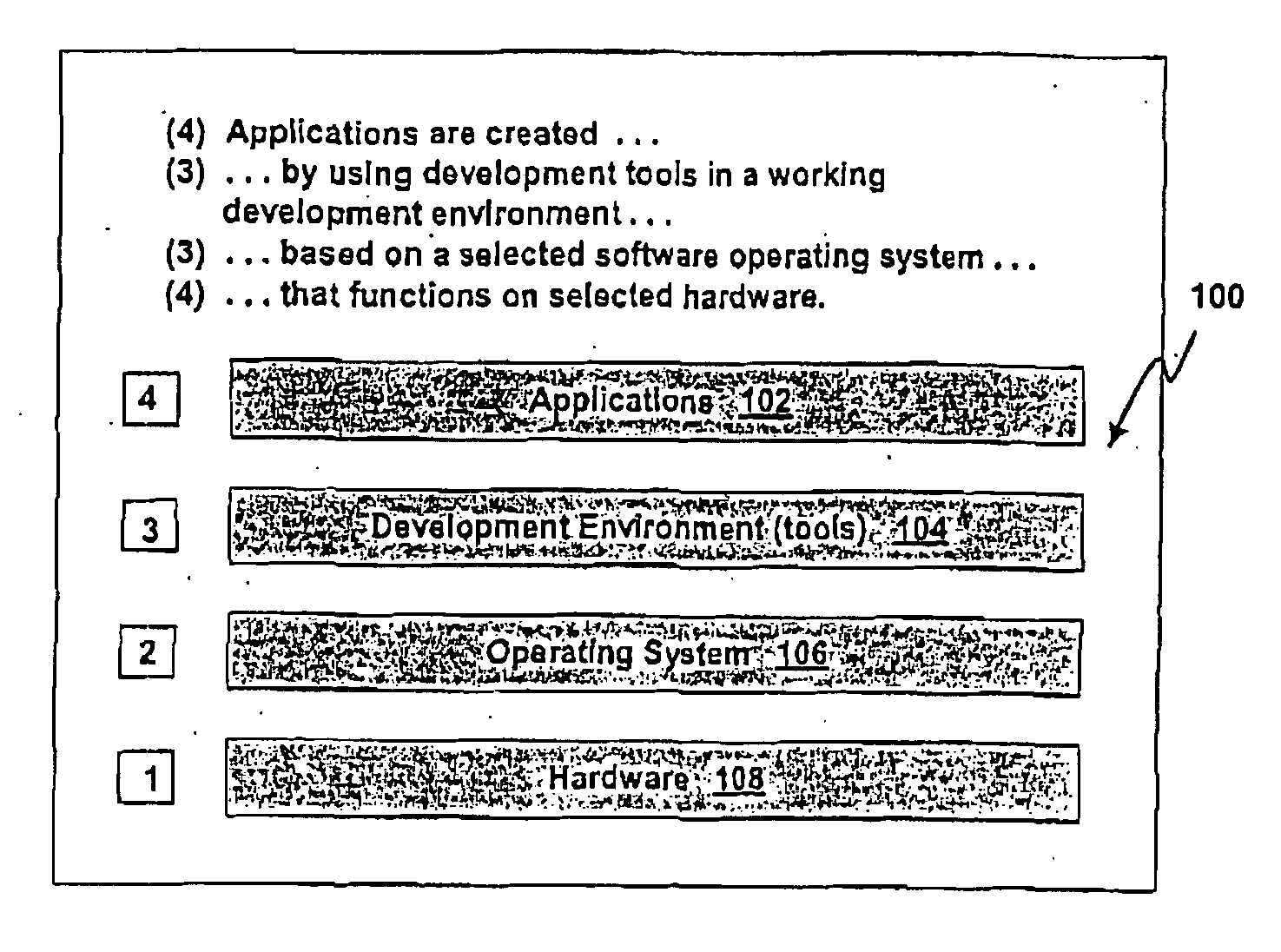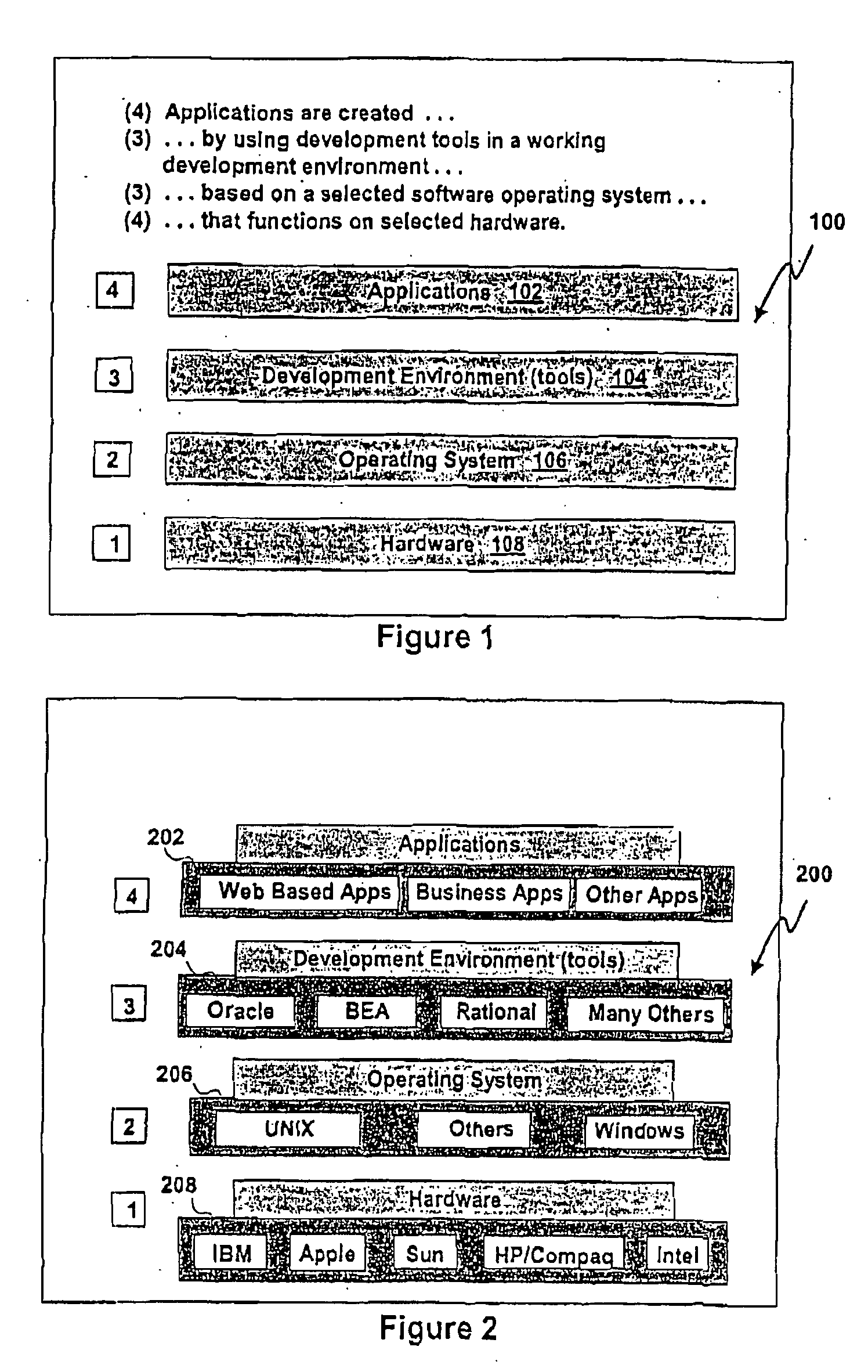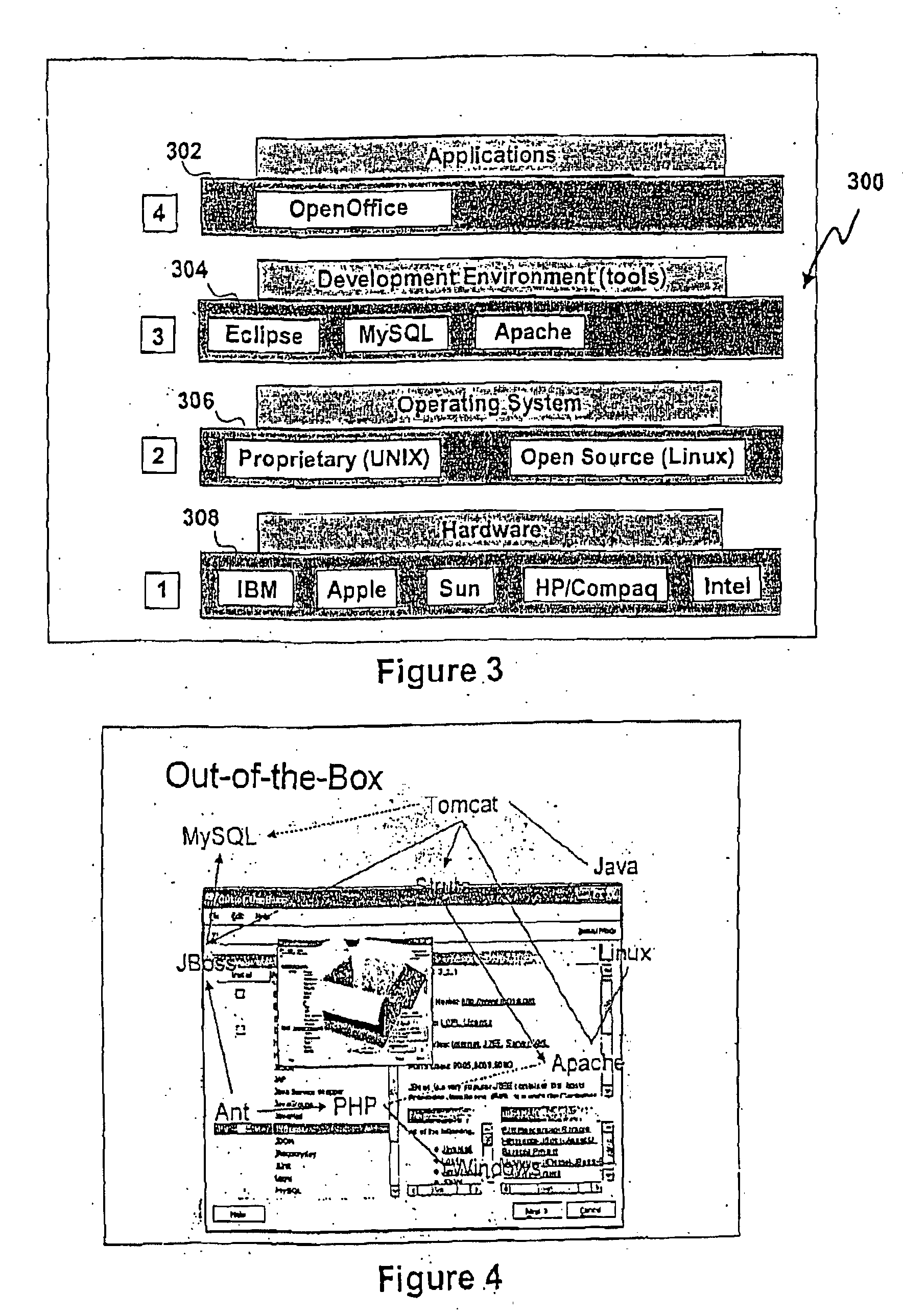Tools for stacking uncoordinated software projects
a software project and tool technology, applied in the field of software projects, can solve problems such as projects, and achieve the effect of significant flexibility in stack configuration
- Summary
- Abstract
- Description
- Claims
- Application Information
AI Technical Summary
Benefits of technology
Problems solved by technology
Method used
Image
Examples
Embodiment Construction
[0034] In the following description, the invention is set forth in the context of a graphical installer system that encompasses stack assembly, installation and support functionality. It should be appreciated that, as noted above, such functionality may be provided independently, rather than as part of an integrated system, in accordance with the present invention. Moreover, it will be appreciated that various aspects of the invention have application beyond the specific context described below. Accordingly, this description should be understood as exemplifying the invention, and not by way of limitation.
[0035] In the following description, the application development environment is first described in relation to the open source software movement. This represents an illustrative application of stacking uncoordinated projects. Thereafter, a system architecture in accordance with the present invention is described. Finally, specific functionality for stack assembly, installation and ...
PUM
 Login to View More
Login to View More Abstract
Description
Claims
Application Information
 Login to View More
Login to View More - R&D
- Intellectual Property
- Life Sciences
- Materials
- Tech Scout
- Unparalleled Data Quality
- Higher Quality Content
- 60% Fewer Hallucinations
Browse by: Latest US Patents, China's latest patents, Technical Efficacy Thesaurus, Application Domain, Technology Topic, Popular Technical Reports.
© 2025 PatSnap. All rights reserved.Legal|Privacy policy|Modern Slavery Act Transparency Statement|Sitemap|About US| Contact US: help@patsnap.com



